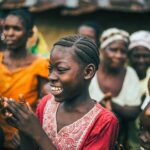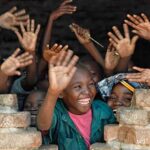Completed Researches
Improved Recipe Trial among Severely Wasted (SAM) and Severely Underweight Children to See Their Impact on Nutritional Status. Year: 2014-2016

Background
Objectives
General objective of this study is to see the impact of selected improved recipes on nutritional status of SAM and Severe undernourished children.
Methodology
Study population: SAM children who are 6 months to 5 years admitted in the hospital.
A structured questionnaire and counseling tool is developed.
WHO growth and height chart are used to screen the patients
Nutrition education is provided to the mothers of the children by using the developed IEC materials (e.g. posters, leaflets, flip chart etc.) to describe the benefits of feeding different locally available and home-made food to improve their child’s nutritional status and how to prepare and feed. They are taught how to take care of their children and what necessary steps they should be followed to reduce disease frequency among their children.
The mothers of the children are taught to prepare the selected recipes.
Regularly monitoring of the weight (each day) and height (once a week) of the children has been done while providing the recommended diet
After discharging from hospital follow up of the children was carries out up to 1 month by home visit or by any other means of communication once a week and also monitor the weight, height and MUAC measurement.
Result
In intervention
Weight gain was 18.1±16.8 g/kg/day at 4th day & 12.4 (±7.3) g/kg/day at 7th day
Mean calorie (kcal/kg body weight) and protein (g/kg body weight) intake were 119(± 62) and 4.5(± 2.3) at 1st day and 129(±77) and 4.92± 2.87 at 7th day.
In Follow-up
5±1.5 kg (mean±SD) weight was increased in 4th follow-up from the 1st follow-up.
Practice of providing appropriate complementary food was followed by 62.5% in 1st follow-up and increased to 66.7% at 4th.
Providing vitamin A and animal protein rich foods were 87.5% and 62.5% at 1st follow-up while improved to 100% at 4th follow-up. Giving breastmilk substitute reduced to 25% at 4th follow-up from 46% in 1st follow-up.
Conclusion
Study Area
N/A





